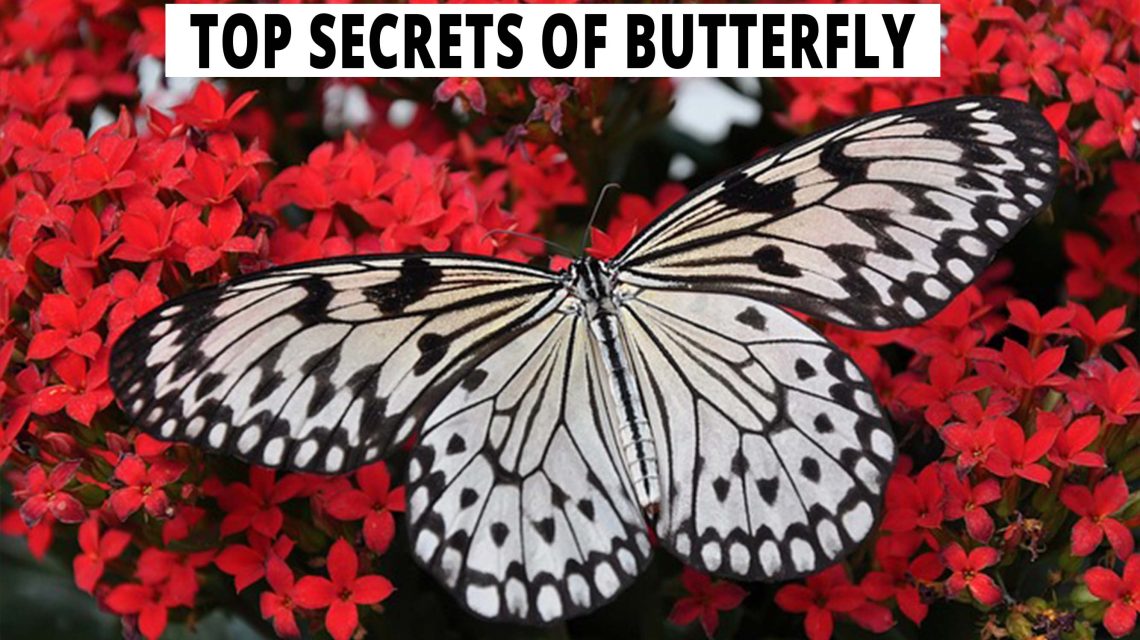The animal world is full of wonders and beauties; the elegance of each animal adds beauty to nature. Butterflies are more attractive than other insects and are widely embraced and celebrated for their beauty. They not only decorate characters with their cultural significance and aesthetic charm but are also valuable for the ecosystem. The butterflies are categorised into the class of Insecta. The Butterflies and the moths belong to the insect Order Lepidoptera. The Butterflies are made up of tiny coloured scales and different patterns on their wings. There are around 18,000 butterfly species around the globe. The earliest butterfly fossil was taken to 40-50 million years ago.
What is a Butterfly?
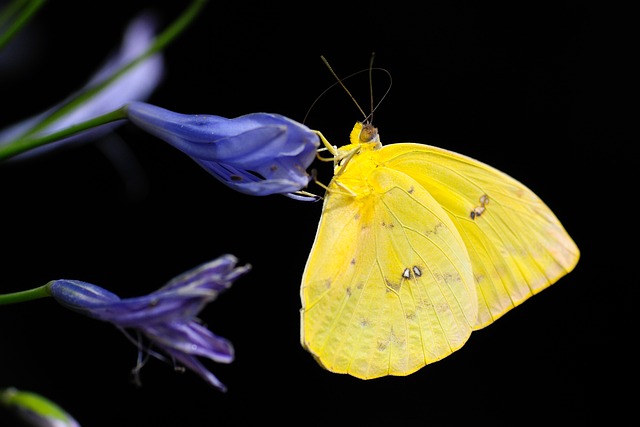
The butterfly is the adult stage of certain insects which belong to Lepidoptera. The meaning of the Greek word Lepidoptera is “scaly wings”, which suit the butterflies as they are covered with thousands of tiny scales overlapping in rows.
Butterflies consist of 3 parts.
All the butterflies are common in overall body design, and a butterfly body is divided into three sections: head, Thorax, and abdomen. Each unit has different functions.
01. Head
The Butterfly head is an essential part of the butterfly, consisting of more critical organs that let the butterfly sense around and feed. The head consists of Antennae, which sense the chemicals in the air and helps the insect maintain balance and detect motion. The Compound eyes are also part of the head; the compound eyes are made of small eyes named ommatidia. Though they cannot find clear images like humans, compound eyes help them to find directions. The butterflies can see backwards, forward, above, and below simultaneously. The Butterflies can only see in ultraviolet light. The Mouthpart of a butterfly is called Proboscis, and it is like a straw that sucks liquids like flower nectar, animal sweat, water, fruit juice and leaking tree sap. It is formed as a spring and coils up under the front of the head.
02. Abdomen
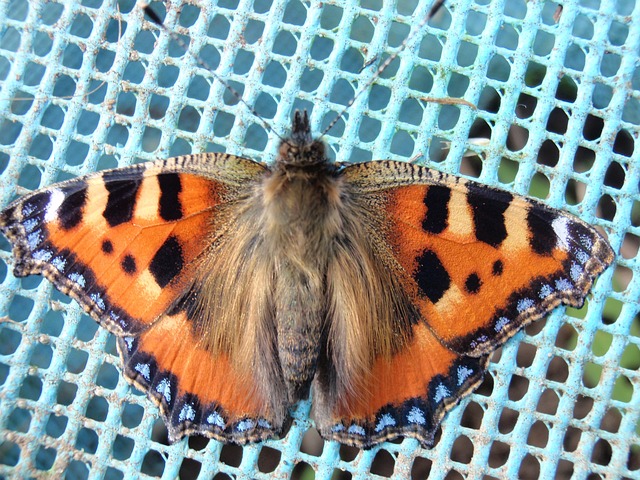
The butterfly abdomen consists of 3 parts, the butterfly abdomen is not much visible, but it has all the things that help the butterfly to survive.
- Digestive tract
The Digestive tract is a body part that helps the butterfly process foods and wastes.
- Reproductive organs
The reproductive organs of male and female butterflies can be found in the abdomen. These reproductive organs of the abdomen let the female butterflies develop eggs until they lay them.
- Spiracles
This is the part that functions in the respiratory system of a butterfly. This allows the insect to breathe. The Spiracle is the part which enables the butterfly to live, as the mouth is not involved in the breathing process.
03. Thorax
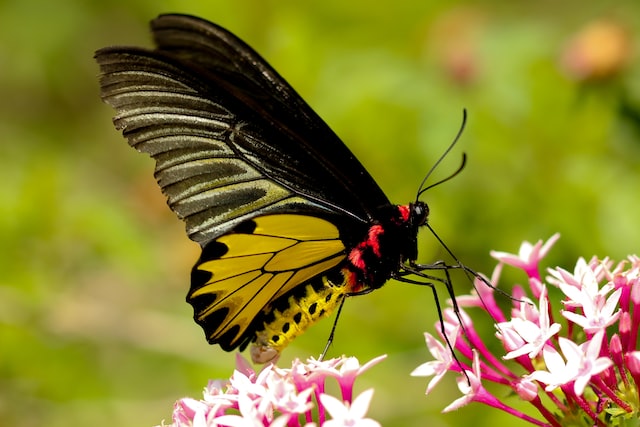
The Thorax can be considered the powerhouse of a butterfly. The Thorax helps the insect to function in the movements and flying. Thorax also consists of different components.
- Six legs
The Six legs are attached to the underside of the Thorax. The butterfly’s foot helps it to taste; the special sensors help the butterfly to sense tasty liquid and help to identify host plants for their caterpillars. Some species of butterflies, especially ones like Monarch, have only four legs. These reduced legs have lost their functions to some extent.
- Four Wings
The four wings of the butterfly are covered with coloured scales, the scales are different and unique for butterflies and moths, and that makes varieties of them. They are diffractive, androconia, and pigmented.
Butterfly life cycle

The life cycle of a butterfly comes up with a combination of different stages. As we discussed above, the butterfly comes up from different insect categories; for each insect, there is a unique stage; let us see what the life cycle stages of a butterfly are.
- Egg
The female adult butterflies lay eggs on plants. The eggs lay on the plants during summer, fall and spring, and the season depending on the butterfly species. The butterfly eggs are tiny, and a female butterfly may lay many eggs at once. The plants where the female butterflies lay eggs later become the food for the hatching caterpillars.
- Caterpillar
This is the Feeding Stage of the butterfly; this is also called a larva. The caterpillar’s job is to eat; the food that the caterpillar at this stage is stored and will use later. As the caterpillar grows, eating more plants, it splits its skin and sheds it about 4 or 5 times.
- Pupa
The pupa is the transition stage of the butterfly. The pupa of a butterfly is also called a chrysalis. In this stage, the caterpillar is fully grown and stops eating. The Pupa stage can last for many weeks; according to the butterfly specie, the time for the pupa will change. The pupa will display without any changes from the outside, but inside the pupa, it will form the butterfly. The wings, legs, eyes and the other adult butterfly parts are made inside the pupa.
- Adult Stage
The adult stage is different from the larva. The caterpillar is tiny and stagnant in plants, but in the adult stage, the butterfly has large legs, long antennae, compound eyes and colourful wings. But they cannot grow as caterpillars. The job of the adult butterfly is to mate and lay eggs. Flying helps them to continue the reproductive cycle. Most adult butterflies live only for one to two weeks. During winter also, many butterflies lose their lives.
Threats for Butterflies
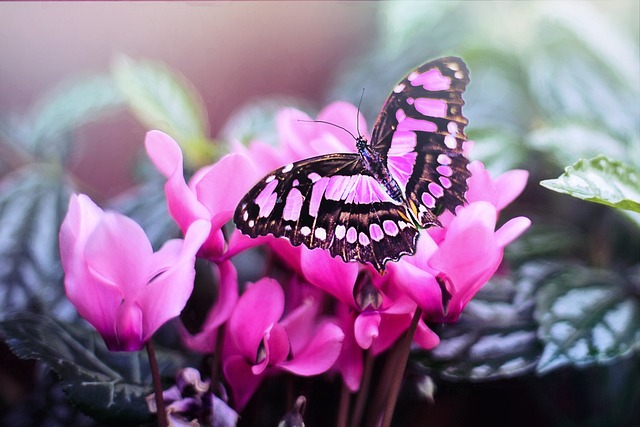
Climatic changes
Climate changes adversely affect the lives of butterflies. The weather conditions of both summer and winter affect them. Most butterflies lose their lives during the annual butterfly migration due to these climatic changes.
Habitat loss
- Due to the human activities of tourism and agriculture, most butterflies lose their habitats.
- Fun facts about butterflies.
- Butterflies can be found all over the world except the continent of Antarctica.
- There are butterflies in different sizes (from 1/8 inch to 12 inches).
- There are about 20,000 species of butterflies in the world.
- Most butterflies have four stages of the life cycle.


